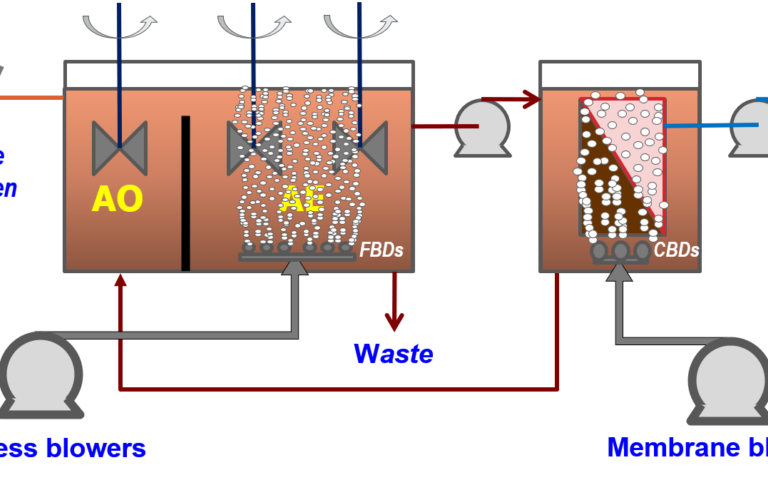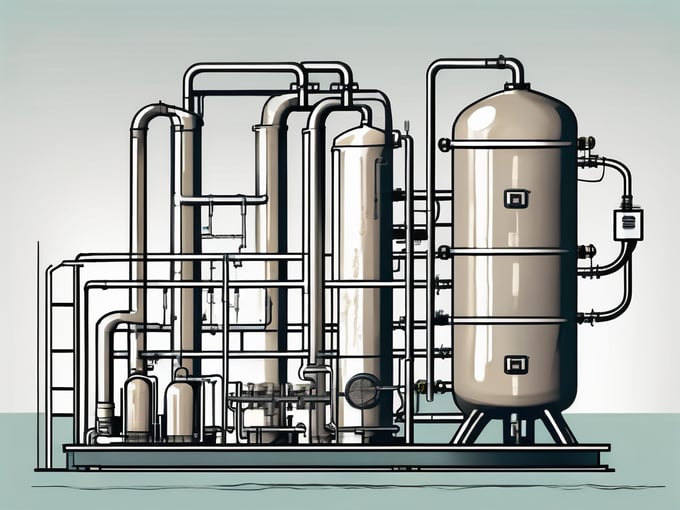Exploring the Environmental Impact of Membrane Bioreactor in Wastewater Treatment
Exploring the Environmental Impact of Membrane Bioreactor in Wastewater Treatment
Blog Article
How Membrane Bioreactors Are Reinventing Water Filtration Equipments
The appearance of membrane layer bioreactors (MBRs) represents a considerable improvement in the field of water filtration, combining biological treatment processes with cutting-edge membrane filtration innovations. As worldwide water scarcity magnifies, the role of MBRs in promoting potable water reuse and lasting water management becomes increasingly critical.
Summary of Membrane Layer Bioreactors
Membrane bioreactors (MBRs) stand for a considerable innovation in water purification modern technology, as they incorporate biological therapy processes with membrane layer filtration. This combination improves the effectiveness of wastewater treatment by using microorganisms to break down natural pollutants while simultaneously employing semi-permeable membranes to separate treated water from put on hold microorganisms and solids.
The MBR system typically contains a biological activator where the microbial population metabolizes pollutants, complied with by a membrane purification system that preserves biomass and permits only tidy water to travel through. This double capability results in higher effluent top quality contrasted to conventional treatment approaches. MBRs can be operated in both set and continuous flow settings, providing flexibility in layout and application.
They additionally make it possible for the healing of water for reuse, hence adding to water sustainability initiatives. On the whole, MBRs are at the center of improving water therapy performance and high quality, showcasing the capacity for innovative remedies in environmental monitoring.
Benefits of MBR Innovation
The assimilation of organic therapy with membrane purification uses countless benefits for water purification procedures. Among the key advantages of Membrane layer Bioreactor (MBR) innovation is its capacity to efficiently eliminate both not natural and organic pollutants, resulting in high-quality effluent. The membranes work as a physical obstacle, protecting against put on hold solids and pathogens from travelling through, which improves the general safety and dependability of treated water.
Furthermore, MBR systems call for a smaller sized footprint compared to standard treatment methods, enabling much more efficient area use. This compact layout is specifically helpful in urban setups where land is restricted. MBRs also show operational flexibility, suiting varying influent high qualities and circulation rates without substantial efficiency degradation.
Furthermore, the process supplies enhanced nutrient elimination abilities, specifically for nitrogen and phosphorus, which are crucial for preventing eutrophication in getting waters. The minimized sludge production connected with MBR technology also translates to decrease disposal expenses, making it an affordable service in the lengthy run - Membrane Bioreactor. Generally, the advantages of MBR modern technology placement it as a leading choice for sustainable and cutting-edge water filtration systems, addressing both environmental and financial issues
Applications in Water Filtration
Applications of Membrane Bioreactor (MBR) technology in water filtration are impactful and diverse, attending to numerous therapy requires throughout several markets. MBRs efficiently integrate organic therapy procedures with membrane layer filtering, making them perfect for local wastewater treatment, industrial effluent management, and even safe and clean water reuse efforts.
In local settings, MBRs are significantly used to improve the quality of treated wastewater, permitting compliance with strict discharge policies and facilitating the recycling of water for watering and non-potable usages. Their compact layout additionally makes them suitable for urban environments where room is restricted.
Industrially, MBR technology is made use of to treat process water and wastewater, particularly in sectors such as food and drink, drugs, and fabrics. By efficiently eliminating contaminants and suspended solids, MBRs help markets minimize environmental impacts while recovering important resources from wastewater streams.
In Addition, MBRs are gaining grip in decentralized water therapy applications, where small systems can be released in remote locations or creating regions. This adaptability enables neighborhoods to achieve lasting water administration options, boosting accessibility to tidy water while reducing reliance on standard treatment approaches.
Situation Research Studies and Success Stories

In another example, a textile production facility in Bangladesh embraced MBR innovation to resolve its wastewater difficulties. The system minimized chemical oxygen need (COD) degrees from 1,200 mg/L to less than 100 mg/L, hence meeting regulative criteria and substantially reducing ecological influence.
The College of Cape Town's MBR installment has shown effective in dealing with greywater for non-potable reuse on campus. This job not just saves safe and clean water but additionally serves as an academic model for lasting techniques.
Moreover, a seafood handling plant in Norway used MBR modern technology to deal with effluents consisting of high degrees of organic matter, attaining over 90% pollutant removal. These situation researches highlight MBR innovation's adaptability and its essential role in improving water quality throughout diverse applications.
Future of Water Treatment Solutions
As international water shortage and pollution difficulties magnify, ingenious water therapy solutions are coming to be significantly important to make certain sustainable accessibility to clean water. The future of water treatment lies in the combination of innovative innovations that improve the effectiveness and efficiency of filtration procedures. Membrane bioreactors (MBRs) go to the leading edge of this development, combining organic therapy with membrane layer purification to generate top quality effluent ideal for different applications.

Arising patterns such as source recovery from wastewater, consisting of nutrients and energy, will certainly further transform treatment facilities right into eco-friendly hubs. Additionally, innovations in nanotechnology and membrane layer materials promise improved performance and long life of purification systems.

Final Thought
Their duty in drinkable water reuse and lasting water administration highlights their relevance in dealing with international water deficiency click difficulties. Continued research study and growth will even more enhance the efficiency and adoption of MBR modern technology, ensuring a resilient future for water treatment services.
The appearance of membrane layer bioreactors (MBRs) represents a substantial innovation in the area of water purification, combining organic therapy procedures with sophisticated membrane filtering technologies. As worldwide water scarcity magnifies, the function of MBRs in facilitating potable water reuse and lasting water monitoring ends up being increasingly crucial. They also enable the healing of water for reuse, therefore adding to water sustainability efforts.As international water scarcity and contamination challenges escalate, innovative water therapy options are ending up being significantly essential to make certain lasting access to clean water. Their role in drinkable water reuse and sustainable water administration highlights their relevance in Learn More attending to worldwide water scarcity difficulties.
Report this page